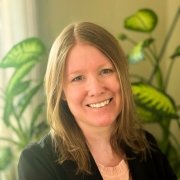Delivering an Integrated Curriculum Using the Communities of Practice Model
MedEdPearls October 2022: How might you establish a Community of Practice (CoP) focused on integration in medical and health professions education?
Health professions education has been rapidly shifting toward curricular integration of basic, clinical, and social sciences. There is evidence to suggest that integration supports meaningful learning by connecting scientific details to clinical scenarios and enhances knowledge retention and transfer. Multiple models or degrees of integration are currently in use, from Ron Harden’s ‘ladder of integration’ that describes eleven levels of integration from isolated curriculum planning and teaching to trans-disciplinary execution, to Ellen Goldman and Scott Schroth’s description of programmatic, course and session level integration designs, and more recently to Kulamakan Kulasegarm’s description of ‘cognitive integration’ that occurs in the minds of experts and learners.
But curriculum design and delivery are distinct. How can we as health professions educators, with our professional identities rooted in the narrow expertise in which we were trained, effectively deliver content in a manner that requires our learners to integrate across disciplines? Using the communities of practice (CoP) framework coupled with the emerging need for virtual collaboration, interdisciplinary health professions educators can work, learn, and innovate together. CoPs consist of three crucial elements that when combined and developed can help us improve our integration performance:
1. Domain of shared interest, identity, or competence (e.g., an “Integration CoP”)
- Health professions educators across disciplines can establish a CoP to meet the integration needs
- The CoP can develop shared objectives to provide direction on team member responsibilities and encourage active contributions
- The CoP may identify community domain boundaries—parameters and objective benchmarks for the community
2. Community engagement, discussion, and relationship building (e.g., the Integration CoP instills a sense of belonging and equality among its interdisciplinary members)
Health professions educators in an established CoP learn from each other’s expertise and in turn support each member’s contributions to the integration
- The CoP members should encourage a risk-free environment to support a sense of safety, open expression, and testing of new ideas
- The CoP may establish leadership roles to motivate members around common goals
- The CoP may identify protected time and adequate resources required for individual success
3. Practice repertoire that is shared among members for group learning (e.g., the Integration CoP members debrief integration activities together)
- Health Professions educators in an established “CoP for Integration” reflect and report on their experiences, teaching strategies and tools, wins and recurring problems
- The CoP reviews progress on shared objectives, provides direction on team member responsibilities, and encourages active contributions
What curriculum design and/or teaching strategies have you employed to enhance transdisciplinary integration? Comment below or share your ideas via Twitter at #MedEdPearls!
About the MedEdPearls Author

Leah Sheridan
PhD
- Professor, Northeast Ohio Medical University
- Associate Dean for Medical Education, Northeast Ohio Medical University
- Jean Bailey, PhD – Virginia Commonwealth University School of Medicine
- Carrie Bowler, EdD, MS, MLSCM (ASCP) – Mayo Clinic School of Continuous Professional Development
- Kristina Dzara, PhD, MMSc (Educators ’16; Assessment ’16; HCE 2.0 ’17) – Saint Louis University School of Medicine
- Shanu Gupta, MD, SFHM – University of South Florida Morsani College of Medicine and Tampa General Hospital
- Jennifer Hillyer, PhD – Northeast Ohio Medical University
- Larry Hurtubise, PhD, MA (HCE 2.0 '16) – The Ohio State University
- Anna Lama, EdD, MA – West Virginia University School of Medicine
- Machelle Linsenmeyer, EdD, NAOME (Assessment ’07) – West Virginia School of Osteopathic Medicine
- Skye McKennon, PharmD, BCPS, ACSM-GEI – Washington State University Elson S. Floyd College of Medicine
- Rachel Moquin, EdD, MA – Washington University School of Medicine
- Stacey Pylman, PhD – Michigan State University College of Human Medicine
- Leah Sheridan, PhD – Northeast Ohio Medical University
- Lonika Sood, MBBS, MHPE – Washington State University Elson S. Floyd College of Medicine
- Mark Terrell, EdD – Lake Erie College of Osteopathic Medicine
- Stacey Wahl, PhD – Virginia Commonwealth University School of Medicine
Harvard Macy Institute
Harvard Macy Institute
The Harvard Macy Institute educates, connects, and serves health care leaders around the globe by providing advanced faculty development programs, thought leadership, and impactful networking opportunities.
6 Programs

